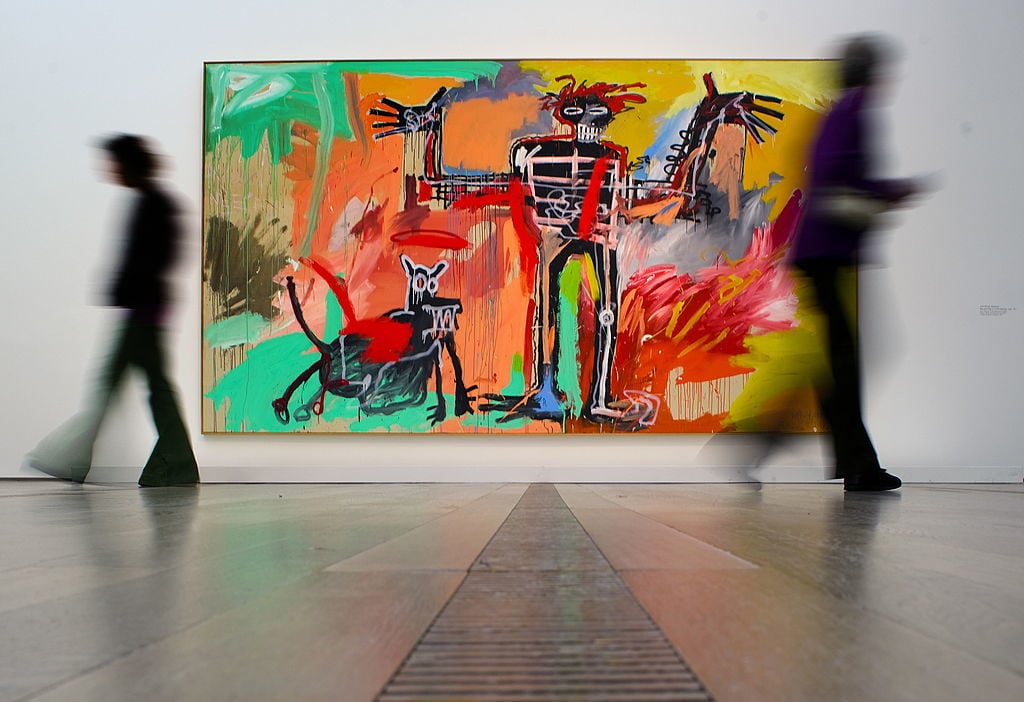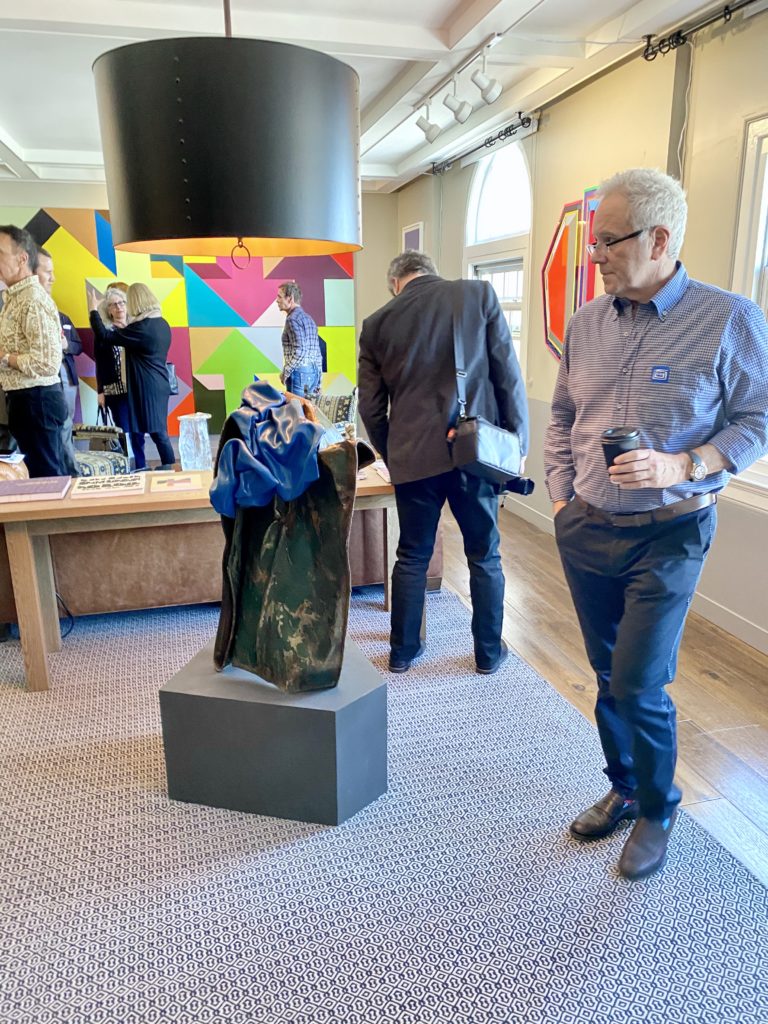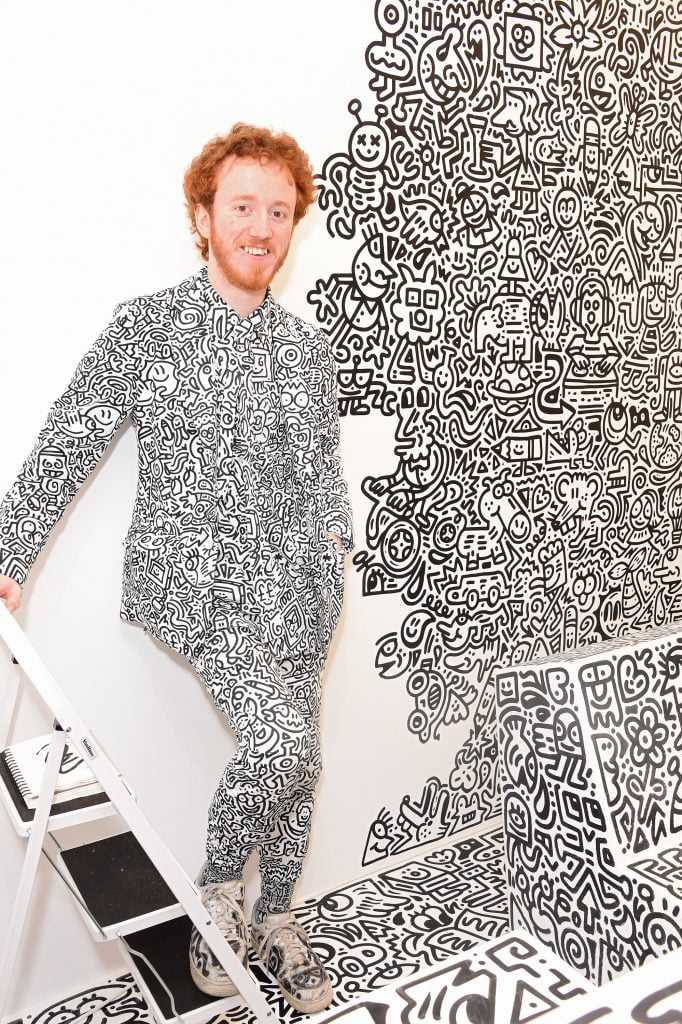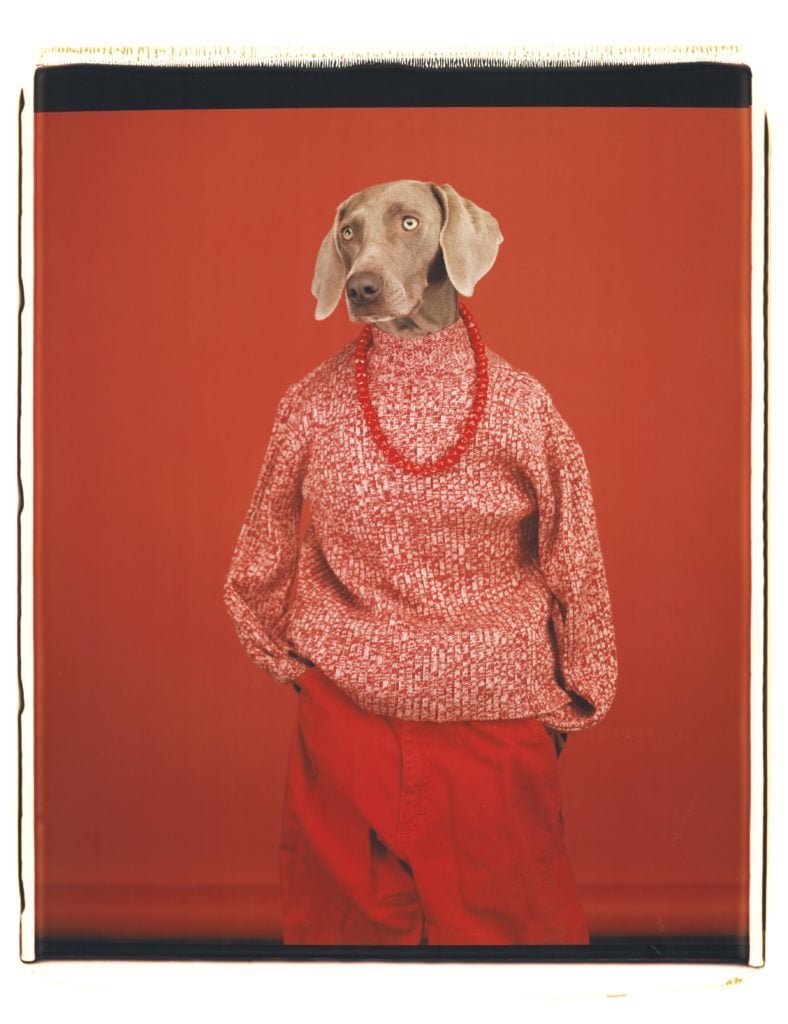Every Wednesday morning, Artnet News brings you The Gray Market. The column decodes important stories from the previous week—and offers unparalleled insight into the inner workings of the art industry in the process.
This week, a reminder that we live in a world of our own making…
COMPETITIVE INSTINCT
Let’s talk about art-market psychology. As a gateway, consider this excerpt from a brilliant story published in a major magazine last week:
“The more popular the gallery is on the internet, the more clout they have,” says Molly, a collector in New York. “If you have a really good social-media presence, you can throw your weight around.” (The clout goes both ways: Posting about your new acquisition on Instagram is an indirect way of broadcasting that someone out there deemed you morally worthy enough to be chosen.) She inquired about eight artworks in six weeks from about five different dealers, only to be continually rejected. She finally got an interview with a gallery whose prized exhibition she had seen on social media. They asked to tour her apartment over Zoom. Fine. They asked for her references. Great. But then they asked if she would pay for an expensive art handler. She asked if she could wait—not only was it during the height of COVID, but the cost of the sessions with the handler could be close to $1,000. The person she was dealing with said over email that artworks were investments and suggested she look elsewhere. “I was like, ‘This is so art world,’” she says.
Nice microcosm of the art market in 2021, right? I suspect many of you are nodding your heads, rolling your eyes, or smirking in knowing agreement with Molly about now. Maybe some of you have even been through a similar experience recently, as speculative demand surges in the primary market for emerging talent thanks partly to the rich getting even richer during lockdown. Absurd that it’s come to this, isn’t it?
I expect a smaller number of you actually read this passage in its original context in the last nine days and are now trying to recall where that was. But if you’re having a hard time making the connection, don’t blame yourself. The reason is that this was not actually a story about the art market—at least not directly.
Instead, it was a story about the maddening difficulties of trying to adopt a rescue dog in the Empire City during the pandemic, written by Allie Conti for New York magazine. I just swapped out exactly 14 of her original 184 words. Here’s the actual excerpt, this time with the text I replaced in bold:
“The more popular the rescue is on the internet, the more clout they have,” says Molly, a writer in New York. “If you have a really good social-media presence, you can throw your weight around.” (The clout goes both ways: Posting about your rescue dog on Instagram is an indirect way of broadcasting that someone out there deemed you morally worthy enough to be chosen.) She inquired about eight dogs in six weeks from about five different rescues, only to be continually rejected. She finally got an interview with a rescue agency whose cute dogs she had seen on social media. They asked to tour her apartment over Zoom. Fine. They asked for her references. Great. But then they asked if she would pay for an expensive trainer. She asked if she could wait—not only was it during the height of COVID, but the cost of the sessions with the trainer could be close to $1,000. The person she was dealing with said over email that dogs were investments and suggested she look elsewhere. “I was like, ‘This is so Brooklyn,’” she says.
I’m not just doing this because it’s an especially wild example of economist Tyler Cowen’s mantra that there are “markets in everything.” I’m doing it because Conti’s story runs rampant with meaningful parallels between what she calls the “pandemic puppy boom” and our current moment in the art-market cycle, where galleries’ waiting lists for hot young artists are again extending to the length of Medieval scrolls, sending prices soaring on the few works rapidly resold at auction. That means it’s the perfect time to sniff around the lockdown-era tussle over rescue dogs for a scent that can lead buyers away from ruin.

Genevieve Figgis, Untitled (Lady with a Dog) (2013). Courtesy Susan Barrett.
SHARED BLOODLINES
I won’t belabor the Business 101 consonance between the market for in-demand artists and the market for COVID-era canines: huge demand for a small supply of desirable assets. The primary motivation in the realm of rescues, of course, was what Conti terms “a lonely, claustrophobic year in which thousands of white-collar workers, sitting at home scrolling through their phones, seemed simultaneously to decide they were finally ready to adopt a dog.”
The result in New York was a competitive ambush. Practically overnight, rescue shelters that typically received about 20 weekly applications in the Before Times were bombarded by hundreds of new hopefuls every seven days. Conti relays that up to 50 would-be adopters sometimes faced off for the right to take home a single furry friend.
More interesting, however, is a related complication of this specialty market: what econ geeks would call a lack of price elasticity. Conti declares early in the piece, “The rescue dog is now, indisputably, a luxury good, without a market pricing system at work to manage demand.” In other words, no matter how many people wanted the asset, its cost never changed. These are adoption agencies, after all, not for-profit breeders willing to capitalize on the emergence of a seller’s market.
To the everlasting astonishment of people I know outside the art trade, the same is true in the primary market for hot artists. A willingness to overpay gives collectors no advantage, because the system is designed to keep the price fixed regardless of the number of interested buyers. Wealth has a tendency to become necessary but not sufficient. Which means, in turn, that some other mechanism must sort the many candidates into winners and losers.
The mechanism is status, an attribute that gatekeepers in each of these two markets can only ever judge subjectively. In the rescue sphere, Conti cites the example of Zainab, an applicant who has “a leadership role in public education,” a master’s degree, and (in Zainab’s own words) makes “good money”… but was deemed unworthy of 60 (!) different dogs by various rescue agencies. Her breakthrough came when she leaned into her status, creating a multipage résumé that “features testimonials from high-powered friends, including local elected officials.”
I’ve never heard of collectors deploying this tactic with art dealers in their pursuit of sought-after works, but how different is it really from communicating your institutional ties, your other acquisitions, and even which other art-world names you summer with? Assuming they operate south of the tier where a dealer already knows their reputation on sight, any savvy buyer will be sure to drop data points like these when in pursuit of a fiercely contested acquisition. What is that if not a kind of résumé?
The power of reputation extends into the virtual realm too. Particularly among younger demographics, your online presence increasingly functions as a living testament to your art-world status. Who pays attention to you? Who actually engages with you in public view, and on what terms? What else is in your collection, and are there clues as to how you got it? Where do you travel, what do you do while you’re there, and who do you do it with? This supplementary info can help fill out the reputational picture with details you might not be able to suss out through the art-dealer whisper network.
As Conti expressed in the excerpt I used to open this column, social-media clout isn’t just a one-way mirror either; it acts as a multipurpose marketing tool. Your social media-affirmed status helps you get the prized asset in the first place, and then advertising that you got the prized asset boosts your social media-affirmed status higher… which in turn increases your chances of getting the next prized asset, and on and on, in a feedback loop of specialty market navel-gazing. What a time to be alive.

Visitors pass in front of a painting by Jean-Michel Basquiat entitled Boy and Dog in a Johnnypump on May 7, 2010, at Art Basel. Photo: Fabrice Coffrini/AFP/Getty Images.
NATURE VS. NURTURE
I can’t decide whether I’m more relieved or depressed to be reminded that the art industry isn’t the only arena hosting these phenomena—and further, that they spread beyond even other collectible markets like design objects, fine wine, classic cars, and sports memorabilia. Their prevalence underscores that we humans (or at least, we humans in rich capitalist communities) almost can’t help but do this nonsense. As Gimlet Media’s Lydia Polgreen put it on Twitter in reaction to Conti’s piece…
Jessica Pierce, a bioethicist and conflicted dog owner Conti spoke to, concluded that the pandemic puppy boom is “driven by a reflection of human narcissism and neurosis,” and if that description isn’t an evergreen one for much of the art establishment, I should probably retire as an analyst immediately.
The counterpoint, however, is that it doesn’t have to be this way in any market. For proof of this fact in the COVID canine gauntlet, consider Defector cofounder Tom Ley’s response piece “If You Really Want a Dog, You Can Get a Damn Dog.”
The crux of Ley’s argument (which is more sympathetic than I expected from its headline) is that even in New York, there are dozens of dogs waiting to be adopted from city-run shelters uninterested in the status-based shenanigans of many rescue agencies. Conti’s subjects plunged themselves into the cyclone by fixating on a handful of suppliers with gale-force marketing resources and high visibility among a large-enough demographic of pretty successful, very online New Yorkers (doubly ironic, he emphasizes, because rescue organizations with enormous Instagram followings often just source dogs from the city-run shelters anyway).
You don’t need me to tell you that the same tunnel vision afflicts many, if not most, art collectors during a bull market, but it’s worth emphasizing that they could probably satisfy their art thirst through far less humiliating venues. Assuming, that is, that a meaningful art experience, not a guaranteed status bump, is the endgame.
At one end of the spectrum, you have more and more artists selling directly to consumers seemingly each day, and each year seems to produce more and more sales channels with light-touch industry infrastructure that are geared toward removing the elitist stigma around collecting. For example, take the Other Art Fair, an international slate of annual in-person and online fairs championing affordable works in cities from New York to Los Angeles to London to Melbourne. Many of the fair’s attendees “have never purchased art before in their lives,” according to director Nicole Garton. “They are looking for a home in the art world, and so a lot of what we do at the fair is to help put people at ease and empower them to explore their own tastes, while having a fun day out.”
The environment tends to be as important as the artwork when it comes to bringing the art market back down to earth. Just as at kindred spirit Kasseem “Swizz Beatz” Dean’s No Commission fair series, artists double as the exhibitors at the Other Art Fair. Some are “as excited and nervous as the visitors themselves” because they’re showing their work for the first time, Garton said, and all of them tend to be “eager to chat with anyone who shows an interest in their passion.” This aspect transforms the art-discovery process into something vastly more welcoming than the smashmouth status game of the traditional system.

Collector and producer David Hoberman contemplates Kennedy Yanko’s sculpture Anoint (2019) inside Kavi Gupta’s booth at Felix 2020. Photography by Tim Schneider.
There is support for a more fraternal approach farther up the industry hierarchy too. This weekend, the latest edition of Los Angeles’s homegrown Felix art fair returns to the cabana-bedecked patio of the Hollywood Roosevelt Hotel. Cofounder and veteran collector Dean Valentine stresses that he and his partners in the venture, L.A. dealers Al and Mills Morán, did not intentionally launch Felix to counterprogram the traditional fair model. But he did acknowledge that “every year, with every art fair, it was getting harder and harder to look, to have meaningful conversations, to have an experience” in what often feels to me like the art market’s answer to the cubicle farm.
“Fairs have become high-speed, high-pressure shopping,” Valentine continued. “We wanted to build something that was a bit more low key, a bit more human.”
Felix’s venue does a lot of the work on this front. “It’s a lot easier to talk hanging by the Hockney pool with a drink in your hand than on a crowded aisle in a convention center, and looking at art in an actual room is a much more immediate and intimate experience than in a fair booth,” he said. (He added that the fair’s braintrust had ideas about how to push the sensibility even further than in past editions, but that COVID restrictions forced them to table those prospects until it comes time to plan the fair’s next February edition.)
And then of course there’s the financial side of the equation. Aside from the true whales, budget constraints limit every collector’s options. But the need to work within your limits can be a golden opportunity rather than a fatal flaw. As Jeffrey Deitch told me for a story on fractional ownership this spring, “If you want to participate in art, there’s great art at every price range.” You just might have to search harder and be more deliberate about what you’re really looking for.
Or maybe not, according to Garton.
“Nowadays, it’s fairly common for people to encounter art outside the context of the traditional art world in their everyday lives—from street art, to music videos, to brand collaborations selling at a local box retailer. Art is everywhere, and people naturally gravitate towards the things they love and find inspiring,” she said. “Ultimately, while some broader trends may be influenced by the top of the market, people are trusting their own instincts and buying the art that speaks to them.”

Mr. Doodle at the launch of “Sense of Space,” a multi-room sensory art experience in Exchange Square in London in 2018. Photo by David M. Benett/Dave Benett/Getty Images for Broadgate.
Personally, I think that’s as true of first-timers sliding a few hundred bucks directly to an overwhelmed artist at the Other Art Fair as it is of moneyed East Asian collectors bidding works by Mr. Doodle out to the farthest reaches of space at major auction houses.
So maybe you can’t pay up for a unique work by a canonical great without handing over your life to a loan shark. Maybe your status level won’t win you a fresh-from-the-studio piece by the next scorching-hot twentysomething gallery sensation. Maybe you aren’t even interested in, say, an editioned print by a respected mid-career artist offered by a friendly poolside dealer at Felix.
That’s okay! In fact, I’d argue that the best outcome for the long-term, full-body health of the art market is for a bunch of art lovers to be compelled to expand their viewfinders beyond the establishment channels, the sizzling names, and the hyperbolic headlines.
So the next time you feel discouraged by cutthroat competition or discriminating dealers in a status-drunk art market, don’t make the same mistake as the upwardly mobile Brooklynites laser-focused on rescue dogs. What’s available elsewhere is just as deserving of a loving home.
[The Cut | Defector]
That’s all for this week. ‘Til next time, remember: if you hate the rules of the game in front of you, choose another one.
Follow Artnet News on Facebook:
Want to stay ahead of the art world? Subscribe to our newsletter to get the breaking news, eye-opening interviews, and incisive critical takes that drive the conversation forward.










